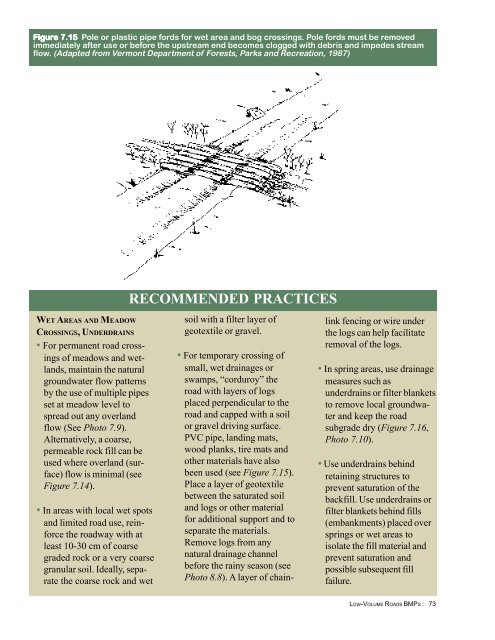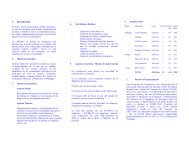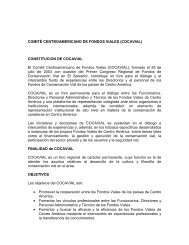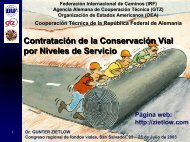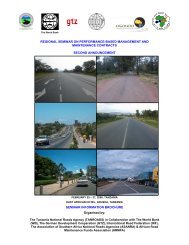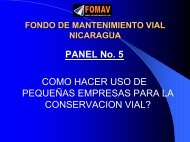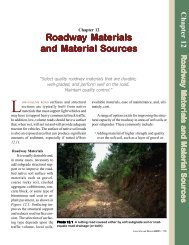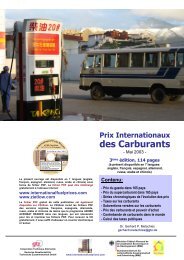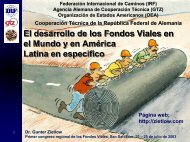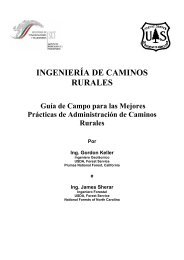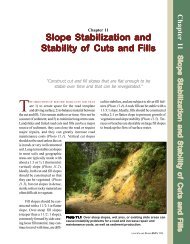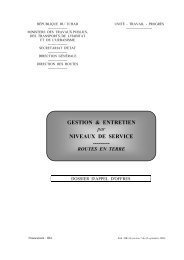You also want an ePaper? Increase the reach of your titles
YUMPU automatically turns print PDFs into web optimized ePapers that Google loves.
Figur<br />
igure 7.15 Pole or plastic pipe fords for wet area and bog crossings. Pole fords must be removed<br />
immediately after use or before the upstream end becomes clogged with debris and impedes stream<br />
flow. (Adapted from Vermont Department <strong>of</strong> Forests, Parks and Recreation, 1987)<br />
WET AREAS AND MEADOW<br />
CROSSINGS, UNDERDRAINS<br />
• For permanent road crossings<br />
<strong>of</strong> meadows and wetlands,<br />
maintain the natural<br />
groundwater flow patterns<br />
by the use <strong>of</strong> multiple pipes<br />
set at meadow level to<br />
spread out any overland<br />
flow (See Photo 7.9).<br />
Alternatively, a coarse,<br />
permeable rock fill can be<br />
used where overland (surface)<br />
flow is minimal (see<br />
Figure 7.14).<br />
• In areas with local wet spots<br />
and limited road use, reinforce<br />
the roadway with at<br />
least 10-30 cm <strong>of</strong> coarse<br />
graded rock or a very coarse<br />
granular soil. Ideally, separate<br />
the coarse rock and wet<br />
RECOMMENDED PRACTICES<br />
soil with a filter layer <strong>of</strong><br />
geotextile or gravel.<br />
• For temporary crossing <strong>of</strong><br />
small, wet drainages or<br />
swamps, “corduroy” the<br />
road with layers <strong>of</strong> logs<br />
placed perpendicular to the<br />
road and capped with a soil<br />
or gravel driving surface.<br />
PVC pipe, landing mats,<br />
wood planks, tire mats and<br />
other materials have also<br />
been used (see Figure 7.15).<br />
Place a layer <strong>of</strong> geotextile<br />
between the saturated soil<br />
and logs or other material<br />
for additional support and to<br />
separate the materials.<br />
Remove logs from any<br />
natural drainage channel<br />
before the rainy season (see<br />
Photo 8.8). A layer <strong>of</strong> chainlink<br />
fencing or wire under<br />
the logs can help facilitate<br />
removal <strong>of</strong> the logs.<br />
• In spring areas, use drainage<br />
measures such as<br />
underdrains or filter blankets<br />
to remove local groundwater<br />
and keep the road<br />
subgrade dry (Figure 7.16,<br />
Photo 7.10).<br />
• Use underdrains behind<br />
retaining structures to<br />
prevent saturation <strong>of</strong> the<br />
backfill. Use underdrains or<br />
filter blankets behind fills<br />
(embankments) placed over<br />
springs or wet areas to<br />
isolate the fill material and<br />
prevent saturation and<br />
possible subsequent fill<br />
failure.<br />
LOW-VOLUME ROADS BMPS : 73


